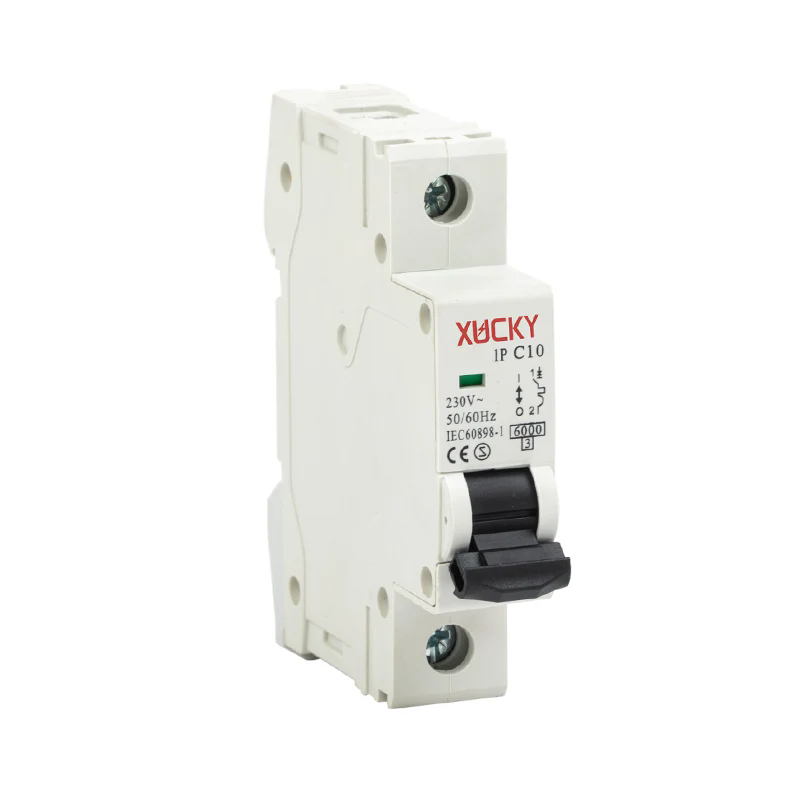Understanding Miniature Circuit Breakers (MCB): A Modern Solution for Electrical Safety
2024-09-20
In modern electrical systems, safety is paramount. Whether you're powering a home, office, or industrial facility, protecting the circuit from potential overloads and short circuits is critical. One of the most efficient and widely used devices for ensuring this protection is the Miniature Circuit Breaker (MCB). This blog will provide a detailed overview of what MCBs are, how they work, and why they are an essential component of any electrical system.
What is a Miniature Circuit Breaker (MCB)?
A Miniature Circuit Breaker (MCB) is an automatically operated electrical switch designed to protect an electrical circuit from damage caused by overloads or short circuits. Unlike fuses, which must be replaced after they operate, MCBs can be reset either manually or automatically to resume normal operation.
MCBs are widely used in both residential and commercial applications because of their reliability, compact size, and ease of use. They come in various sizes and ratings, designed to protect different types of circuits, from small lighting installations to larger power distribution systems.
How Does a Miniature Circuit Breaker Work?
The primary function of an MCB is to interrupt the flow of current when it detects an overload or short circuit. Here’s a simplified breakdown of how it operates:
1. Normal Operation: Under normal conditions, the current flowing through the circuit stays within the designated limit. The MCB allows this current to pass uninterrupted.
2. Overload Condition: When too many appliances or devices are connected to the same circuit, the current can exceed the safe limit. This is known as an overload. Inside the MCB, a bimetallic strip heats up due to the excessive current and bends. This bending action trips the mechanism, causing the MCB to switch off and stop the flow of electricity.
3. Short Circuit Condition: A short circuit occurs when the electrical current bypasses the normal load, typically due to damaged wiring or faulty devices. In this case, the MCB reacts much faster than with an overload. A magnetic coil inside the MCB generates a strong magnetic field that trips the breaker immediately, cutting off the current.
4. Resetting the Breaker: After the MCB trips due to an overload or short circuit, it can be reset by manually flipping the switch back to the "on" position. This restores the flow of electricity once the fault has been corrected.
Key Benefits of Using Miniature Circuit Breakers
1. Enhanced Safety
The primary advantage of an MCB is its ability to provide reliable protection against electrical faults. By automatically cutting off the power during overload or short circuit conditions, MCBs reduce the risk of electrical fires and equipment damage. This level of safety is critical in both homes and commercial environments, where protecting lives and property is a top priority.
2. Reusable and Cost-Effective
Unlike traditional fuses, which must be replaced after a fault occurs, MCBs can simply be reset. This makes them more convenient and cost-effective over time, as they don’t require constant replacement. Additionally, since MCBs trip only when necessary, they help ensure that circuits aren’t unnecessarily disconnected, which can save businesses time and prevent costly downtime.
3. Precision in Circuit Protection
MCBs are designed to be highly precise in detecting faults. This means that they can differentiate between an overload condition and a short circuit, tripping the breaker appropriately based on the fault type. This precision ensures that the protection is suited to the specific needs of the circuit, minimizing the risk of false trips while maximizing safety.
4. Quick Recovery from Faults
In environments where continuous power is crucial, such as offices or industrial plants, quick recovery from electrical faults is essential. MCBs allow for rapid resetting after the cause of the trip is resolved, helping restore power without the need for complex repairs or replacements.
5. Compact and Space-Saving Design
Miniature circuit breakers are, as the name suggests, compact. This makes them ideal for installations where space is limited, such as residential breaker panels or densely packed industrial control rooms. Their small footprint means that more circuits can be protected without taking up excessive space.
Different Types of Miniature Circuit Breakers
Not all MCBs are created equal. They come in different types and ratings, tailored to the specific needs of various applications. Here are the most common types:
1. Type B MCB
Type B MCBs are designed for residential use, where typical electrical loads include lighting and small appliances. They trip when the current exceeds 3 to 5 times the rated load. Type B MCBs are ideal for protecting circuits with low inrush currents, such as those found in homes.
2. Type C MCB
Type C MCBs are more suited for commercial and industrial applications. They trip when the current exceeds 5 to 10 times the rated load, making them better suited for circuits that power motors, compressors, and other equipment with moderate inrush currents.
3. Type D MCB
Type D MCBs are designed for industrial applications where high inrush currents are common, such as in the case of heavy-duty machinery, transformers, and large motors. They trip when the current exceeds 10 to 20 times the rated load.
Choosing the correct type of MCB is crucial to ensuring optimal protection and performance for your specific application.
Common Applications of MCBs
MCBs are found in a wide range of environments, offering protection and safety for both small and large electrical systems. Common applications include:
- Residential Homes: In homes, MCBs protect individual circuits such as lighting, kitchen appliances, and HVAC systems.
- Commercial Buildings: MCBs ensure the safety of office buildings by protecting circuits for computers, lighting, and electrical systems.
- Industrial Plants: Factories and plants use MCBs to protect heavy machinery, motors, and other equipment from potential electrical faults.
- Data Centers: Data centers use MCBs to safeguard servers and other critical IT infrastructure from power surges and faults.
How to Choose the Right MCB for Your Needs
When selecting an MCB, there are several factors to consider:
- Current Rating: This refers to the maximum current the MCB can handle before tripping. You need to choose a rating that matches the load of your circuit.
- Tripping Curve: As mentioned earlier, MCBs come in various types (B, C, D) with different tripping curves. The tripping curve determines how sensitive the breaker is to faults, so select one based on the type of electrical loads you’re protecting.
- Number of Poles: MCBs can be single-pole, double-pole, or even three-pole, depending on the number of circuits that need protection. For example, residential settings typically use single-pole MCBs, while industrial applications may require multiple poles.
Conclusion
A Miniature Circuit Breaker (MCB) is an essential component of any modern electrical system. Whether you’re safeguarding your home’s lighting circuit or protecting an entire industrial plant, MCBs offer a reliable, cost-effective solution for preventing electrical faults and enhancing safety. Their ease of use, precision in circuit protection, and environmentally friendly nature make them the go-to choice for both residential and commercial applications.
By selecting the right type of MCB for your specific needs, you can ensure that your electrical system remains safe and functional, giving you peace of mind and protecting your valuable equipment and property.



